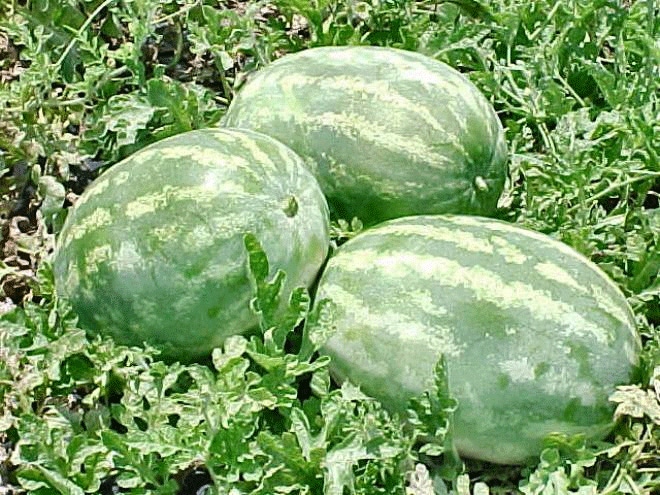June 20, 2014

A serious epidemic of downy mildew has been reported in Georgia watermelons, and spider mites are coming on strong as temperatures heat up, according University of Georgia Cooperative Extension vegetable specialists.
Below is an alert issued by David Langston, UGA Extension vegetable plant pathologist, and Stormy Sparks, UGA Extension vegetable entomologist:
Tucker Price, UGA Extension in Cook County, (located in south-central Georgia) has found a serious epidemic of downy mildew. This disease can be very devastating and can spread very rapidly and is typically worse on watermelon that other cucurbits.
Ranman and Zampro are the primary products I would use to reduce disease severity and spread. They need to be tank-mixed with mancozeb or chlorothalonil to increase efficacy and broaden the disease control spectrum. See pictures of the disease that Tucker Price has provided below. Typically you see dark, almost black, angular lesions. Sometimes there will be some chlorosis surrounding those lesions, and many leaves will curl up on themselves and produce a “fiddlehead-shaped” leaf.
Spider mites
We are seeing spider mites in multiple crops, with injury in a variety of cucurbits, mostly watermelon. Spider mites love hot, dry weather, so it is about time for them. They tend to start out at field edges or by drive rows. Anywhere dust settles on the crop is a likely spot for the earliest infestations.
In watermelons, infestations tend to start in the crown and spread from there. You will see a fairly typical speckling of the leaf that most people associate with spider mites early in the infestation. This is often misinterpreted as a disease. Check for the mites on the bottom of the leaves to verify their presence.
In cantaloupe, the mites tend to be fairly evenly distributed across the foliage rather than starting in the crown. They also produce a yellow spotting (rather than speckling) (see attached picture).
For all mite infestations, verify by looking for the mites. They are usually on the bottoms of leaves.
For mite control there are multiple options in watermelon and cantaloupe.
Agri-mek (and generics) has the advantage of strong translaminar movement so that product on the top of the leaf moves through the leaf and controls mites on the bottom of the leaf. A penetrating surfactant helps with this movement.
Most of the other acaracides are contact products. They are excellent acaracides, but you have to pay attention to how they are applied if you want good results.
For “rescue” type treatments your options include Agri-mek, Acramite, Portal, and Kanemite.
If you catch infestations early, other options include Zeal and Oberon. Zeal is a growth regulator, so it has no impact on adult mites (excellent activity on immatures). Oberon is also very good, but rather slow in its activity. If you check behind Oberon at 4 days, you may not be happy. Give it 5 to 7 days and it looks very good. Oberon also indicates it may take two applications. If you use the low rate, that likely increases the need for a second application. If you use the high rate (8.5 oz.) and don’t get in a hurry, one application is usually sufficient.
Information provided by Larry Varnadoe, UGA Extension coordinator in Worth County.
About the Author(s)
You May Also Like






